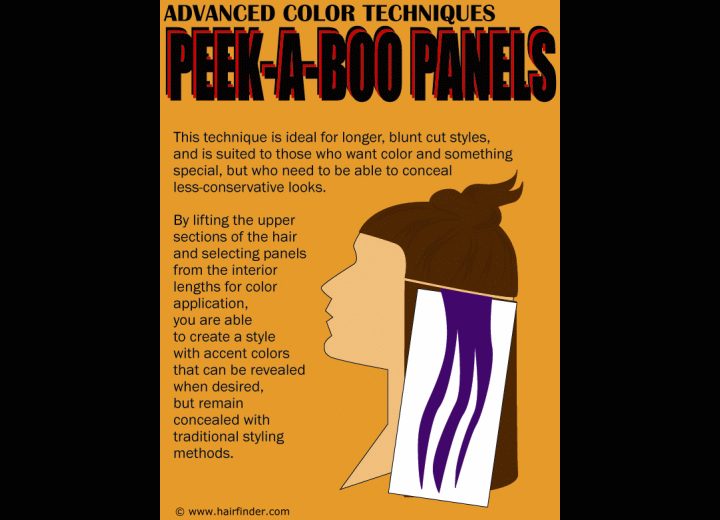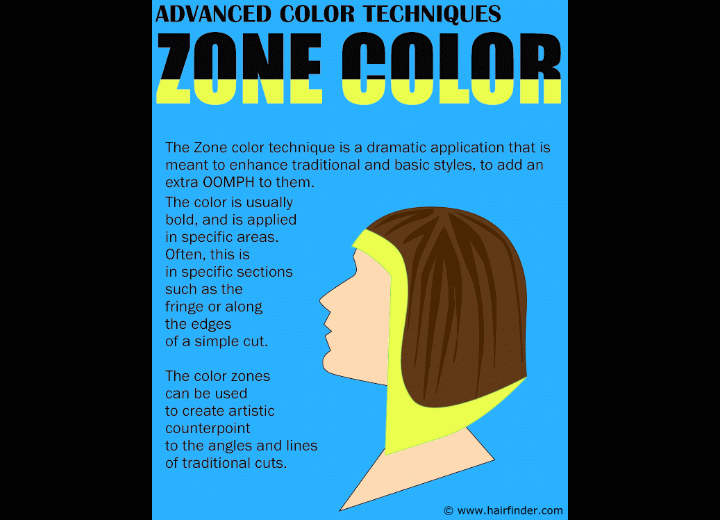Advanced Hair Color Tips (2)

Previous page
Peek-a-boo Panels
When looking to add color effects to long, blunt-cut hairstyles, one option that can be useful is "peek-a-boo panels" of lightened hair or bold color. When the hair is styled to hang down normally, the color panels are unnoticeable and may just "peek" from beneath the surface as the hair moves.
The benefits of this are that the hair can be worn in a conservative fashion where appropriate, and still allow for styling to reveal the individuality that is desired. The technique involves taking the hair and lifting the upper layers and securing them out of the way. Then "panels" are isolated in the lower sections of the hair and dyed with the desired color mix. Once processed, the result is panels of color that are concealed between layers of uncolored hair.
Targeted Color

For truly dramatic effects with color, there's targeted coloring. Of course, most special effects color techniques are targeted coloring, but in this case we are referring to what are usually broader areas of color or artistic interpretations of color applications.
Examples of targeted coloring include a variety of effects. Among these are:
"Tipping": wherein layered hair is colored only on the ends of the hair, or in random slices on the ends, in order to add visual interest and detail to a layered style. Usually this technique is used with cuts that include choppy layering.
"Zones and Edging": this technique is generally useful with clean-edged, geometric styles, like a bob cut. The color effects are isolated to specific zone, such as the bangs, or along the bottom edge of the cut. They may also include interior lines that soften or reshape the overall shape of the cut. For example, an interior edge to the color zone that curves at the point where the cut has a clean, hard corner.
©Hairfinder.com
See also:
Hair color blocking
Why and how to take the hair texture and density into consideration when coloring hair
Why and how to take the wave pattern of the hair into consideration when coloring